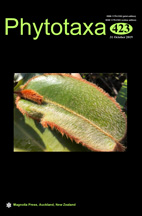Abstract
Aster polius C.K. Schneider (Asteraceae, Astereae) was known only from the holotype locality after having been collected in 1908. Its systematic position and relationships among Aster and related genera remained unknown. In this work, we report the rediscovery of Aster polius at the type locality in western Sichuan, China, in 2016. After a detailed comparison with herbarium specimens and a phylogenetic reconstruction of densely sampled relatives based on nuclear markers (nrITS & nrETS), the position of Aster polius was determined to be in Aster ser. Albescentes. This species differs from other species of A. ser. Albescents in some key characters, i.e., leaves adaxially verruculose, leaves narrowly ovate to elliptic, 0.6–1.5 × 0.2–0.7 cm, capitula in corymbiform synflorescences. An amended description with a distribution map and a drawing of the species are presented.

